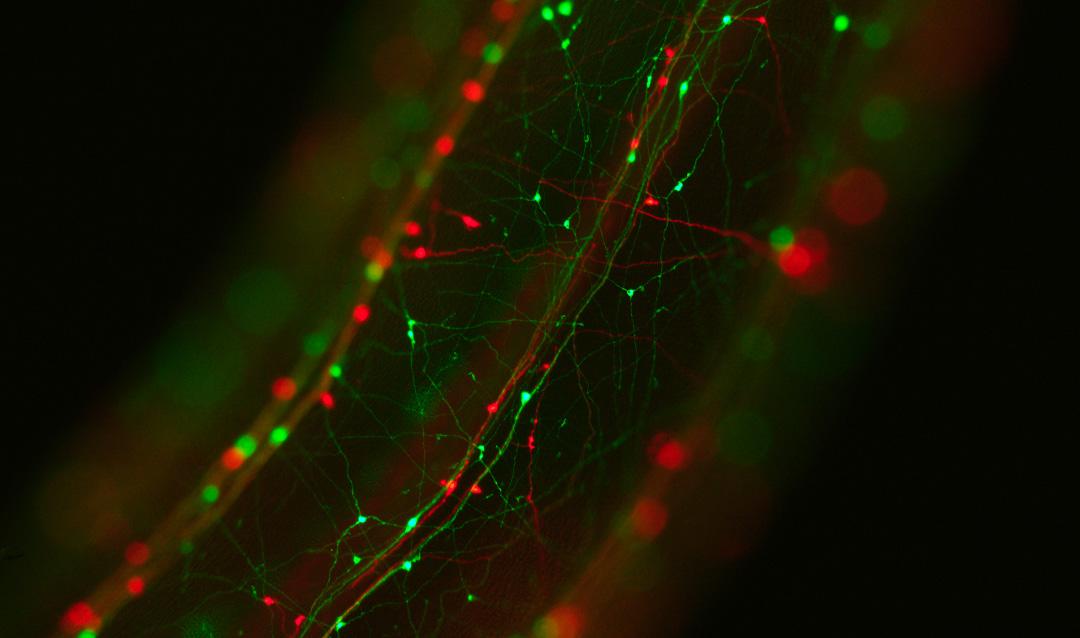Inside the Layden Lab
The Layden Lab includes a lab manager, a postdoctoral researcher, three graduate students, and three undergraduate students who help carry out research using Nematostella vectensis.
Their day-to-day work includes preparing artificial seawater and running a controlled schedule of reproduction of Nematostella vectensis. The sea anemones’ spawning is triggered by light and heat. By controlling these conditions, the lab can net an abundance of embryos daily, which allows them to continuously perform experiments to investigate gene function in this exciting model system.
According to “Nematostella vectensis as a Model System,” a book chapter Layden and his team contributed to the 2021 Handbook of Marine Model Organisms in Experimental Biology, the starlet sea anemone has many characteristics that make it a great subject for research.
Among those are the ability to compare multiple developmental trajectories of embryogenesis, regeneration and asexual reproduction within a single organism. It is also highly amenable to the study of evolution and development, neurophysiology and behavioral ecology.
In 2007, the creature’s genome was published, resulting in a rapid expansion of studies using Nematostella vectensis. Layden estimates that two decades ago, perhaps two or three labs nationwide were dedicated to research using the creatures. That number is now about 70-80 labs, many of which use the injection and observation protocol that the Layden Lab developed and published a decade ago.
The team takes pride in not only the importance of its research findings, but also the efficiency of its processes. Using their protocol, experienced researchers can inject an embryo every three seconds, or thousands within an hour.










